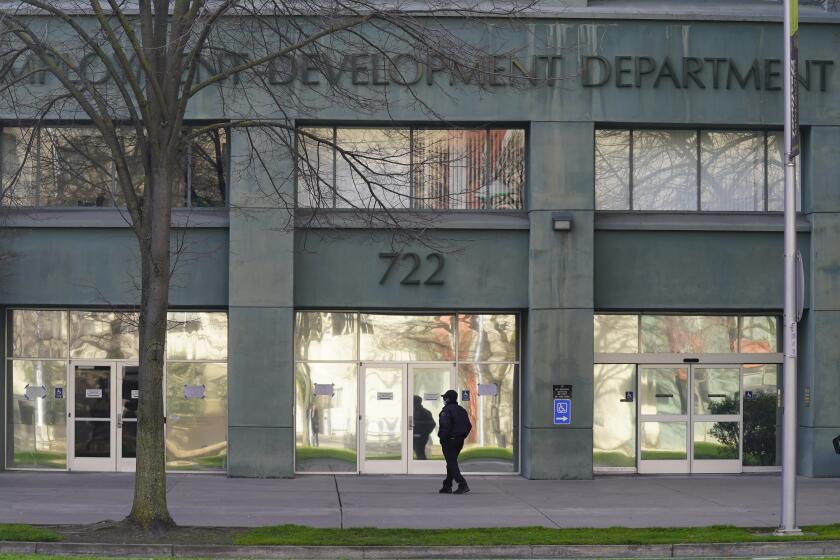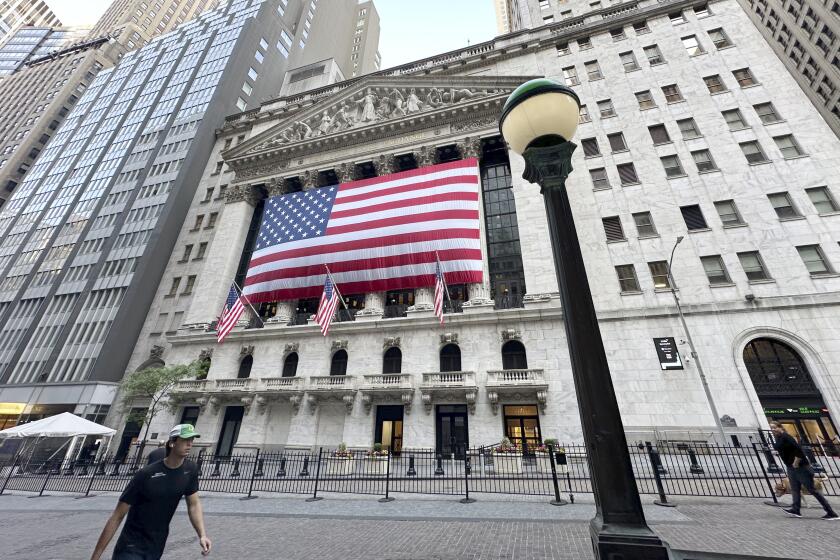Price Rise Spurs Fears of Inflation : 0.6% March Gain in Wholesale Index Is Highest in Year
Wholesale prices jumped 0.6% in March, substantially more than expected and the largest such increase in nearly a year, the Labor Department said Friday in a report that appears certain to increase worries that the economy faces higher inflation as well as other problems.
Part of the increase was blamed on higher energy prices, which have been on a roller coaster this year. But even without the volatile food and energy price components, the cost of finished goods was up 0.4%--an inflation underpinning that economists worry may be enough to induce the Federal Reserve to raise interest rates before long.
“A moderately troubling number,” said Donald Ratajczak, director of the economic forecasting project at Georgia State University, Atlanta, and a specialist in price movements. “Inflation is coming back.”
More Increases Seen
Ratajczak cautioned that more price increases are in the pipeline. Among goods that still require finishing before being ready for sale at the retail level, he noted a 4.4% surge in industrial chemicals and a 3% increase in non-ferrous metals--sure harbingers of higher prices for finished goods later on and at the retail level after that.
“Over the past few months, we have had higher increases in non-food, non-energy prices,” observed Nigel Gault of Data Resources Inc., an economic forecasting firm in Lexington, Mass. “That’s the important trend. . . . There’s no reason to panic yet, but the inflation rate has picked up.”
In addition, raw materials other than food and energy were up 1.4%, continuing a yearlong forward march in commodity prices. All of these elements eventually can be expected to show up as higher inflation at the retail level.
Hike in Interest Rates
Many economists are predicting that the Federal Reserve will raise interest rates as an antidote.
“We’ve had several pieces of news lately that the markets will interpret as uniformly bad,” said Donald Straszheim of Merrill Lynch in New York.
The February trade deficit, reported by the government Thursday to be an unexpectedly high $13.8 billion, will drive the dollar’s value down and import prices up, Straszheim said.
“The trade number is easier to explain away because it bounces up and down, but not the price figures,” Straszheim said. “The 2% and 3% inflation we have been enjoying--we probably will no longer.
“Oil prices are rising,” he added. “We have had strong employment gains, meaning tight labor markets. Now this.
“The markets are going to expect inflation in the 4% to 5% annual range now and--with the trade numbers yesterday and this today--it’s just a matter of time before the Fed tightens and drives up interest rates.”
Irwin L. Kellner, chief economist at Manufacturers Hanover Bank in New York, added: “What we’re seeing is more inflation working its way through the pipeline. Businessmen have been complaining (that) they can’t pass on all their higher materials costs and now we’ll either get higher (retail) prices or they’ll take more hits to their profits. You can’t blame the stock market for being nervous.
“Nothing looks very good right now,” added Kellner, who has been virtually alone among mainstream business economists in predicting a recession in the first part of 1988. “Prices are up and industrial production is slowing down. Things are looking a lot less positive.”
Production Sluggish
In another report Friday, the Federal Reserve said the nation’s industrial production increased by 0.1% in March, a sluggish figure but one that had been generally expected by specialists on the basis of a slowdown in industrial hiring.
The gain was caused primarily by increases in production of automobiles and business equipment.
Even the White House was moderately glum about Friday’s economic news.
“We’re disappointed by this month’s (wholesale price) increase,” said spokesman Marlin Fitzwater, adding that over the last few months inflation “still has remained very low.” As for industrial production, Fitzwater declared: “It’s not as quick a pace as we have seen in the past. Nevertheless, it, too, is above levels a year earlier.”
March’s 0.6% increase in the wholesale price index followed an increase of 0.4% in January and a 0.2% decline in February. The index rose to 106.2 in March, meaning wholesale goods that cost $10 in 1982 cost $10.62 in March.
The Federal Reserve said its index of industrial production in March was 134.6, contrasted with a 1977 base of 100.






